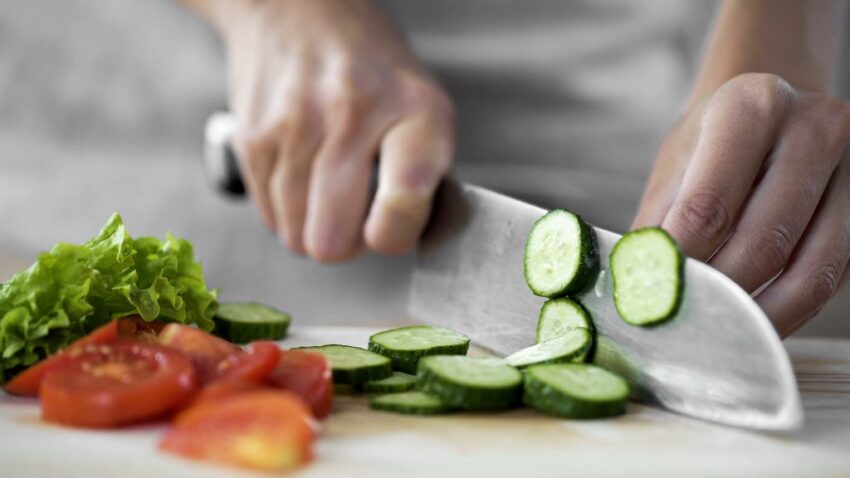
The Kitchen and Cookware Stores industry in Australia is a vital sector of the retail market. As of 2023, the industry’s market size, measured by revenue, has reached a staggering $1.4 billion. This growth can be attributed to several factors, such as increasing consumer demand for high-quality kitchen products, a rise in disposable income, and a growing interest in cooking and chopping.
A good set of knives is an essential part of any kitchen. From chopping vegetables to carving meat, having the right knife for the job can make all the difference. However, with many options available, like Lion Steel knives in Australia, knowing which ones you need in your kitchen can be difficult. The following points will explore the types of knives you need in your kitchen and their purposes.
1. Chef’s Knife
A chef’s knife is arguably the essential knife in any kitchen. It is a versatile knife that you can use for a variety of tasks, such as chopping, slicing, and dicing. The blade is typically 6-12 inches long and has a curved edge, which allows for a rocking motion while cutting.
A good chef’s knife has a comfortable grip and a sharp blade. It should also be well-balanced, with the weight of the blade evenly distributed to make it easier to use.
2. Paring Knife
A paring knife has a pointed blade used for intricate tasks, such as peeling and trimming. It is also helpful for cutting small fruits and vegetables, such as strawberries or garlic.
Paring knives typically have 2-4 inches-long blades, making them easy to handle and control. A good paring knife should have a comfortable grip and a sharp blade that can easily cut through the tough skin of carcasses.
3. Bread knife
A bread knife is a serrated knife that is designed to slice through bread without squishing or tearing it. The serrations on the blade allow for a clean cut, while the length of the blade allows for long, even strokes.
A good bread knife should have a comfortable grip and a blade that is at least 8 inches long. The serrations on the blade should be sharp and evenly spaced to ensure a clean cut every time.
4. Utility Knife
A utility knife is a multi-purpose knife that can be used for a variety of tasks, such as slicing meat, cutting cheese, and trimming vegetables. It is a smaller version of a chef’s knife, with a blade that is typically 4-7 inches long.
A good utility knife should have a comfortable grip and a sharp blade that can easily cut through various foods. It should also be well-balanced and easy to control.
5. Boning Knife
A boning knife is a specialised knife used to remove bones from meat and poultry. The blade is typically thin and flexible, allowing for precise cuts along the bone.
A good boning knife should have a comfortable grip and a sharp, flexible blade. The blade should also be strong enough to handle tough cuts of meat, such as beef or pork.
6. Santoku Knife
A santoku knife is a Japanese-style knife that is similar to a chef’s knife. It has a shorter, wider blade that is typically 5-7 inches long and has a straighter edge than a chef’s knife.
A good Santoku knife should have a comfortable grip and a sharp, wide blade. It should also be well-balanced and easily controlled, allowing for precise cuts.
In conclusion, having suitable types of knives from brands like Lion Steel knives in Australia in your kitchen can make cooking and meal preparation much easier and more efficient. A good set of knives should include a chef’s knife, a paring knife, a bread knife, a utility knife, a boning knife, and a santoku knife. Each of these knives serves a specific purpose and can be used for a variety of tasks. By investing in high-quality knives and learning how to use them properly, you can take your cooking to the next level and easily create delicious meals.

Aimee Garcia is a Marketing Consultant and Technical Writer at DailyTechTime. She has 5+ years of experience in Digital Marketing. She has worked with different IT companies.

